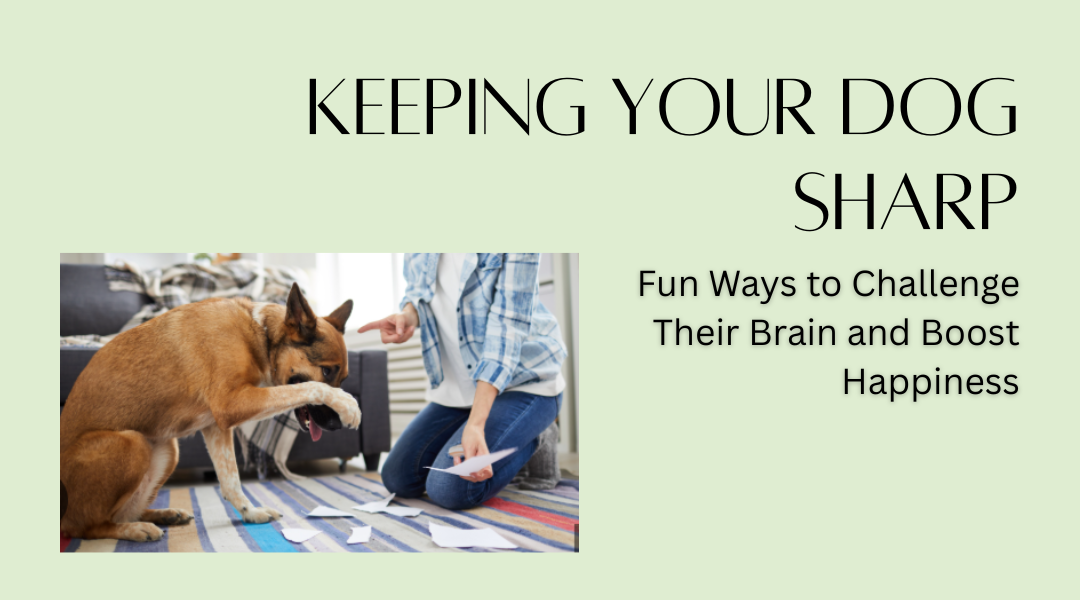Dogs aren’t just furry couch warmers—they’re clever, curious creatures who need mental workouts as much as physical exercise. A bored dog is a recipe for chewed shoes, excessive barking, or obsessive behaviors. But with some simple tweaks to your routine, you can turn your pup into a focused, content companion. Here’s how.
Brain Games for Smarter Dogs
1. The Magic of Puzzle Toys
- Kong Wobblers: These weighted treat dispensers make your dog nudge and bat them to get kibble. My Lab mix spends 20 minutes happily knocking his around the kitchen.
- Muffin Tin Game: Hide treats under tennis balls in a muffin tin. Watch your dog problem-solve to uncover the goodies.
2. Rotate, Don’t Accumulate
That basket of 20 toys? Overwhelming. Try the “3 Toy Rule”:
- Keep out only a chew toy, a plush toy, and a puzzle toy.
- Swap them weekly. Suddenly, that ignored rope toy becomes exciting again.
3. Sniffari Walks
Forget power-walking. Let your dog lead:
- Use a 15-foot leash in safe areas.
- Let them stop and sniff freely—it’s like letting them read the neighborhood “news.”
- 20 minutes of sniffing tires most dogs more than an hour of leash-pulling.
Training That Actually Works
Skip the “Alpha” Nonsense
Modern trainers know: Dogs learn best through positive reinforcement, not dominance.
Pro Tips:
- “Capture” Good Behavior: Always carry treats. The second your dog sits calmly or ignores a squirrel—click (or say “yes!”) and reward.
- The 3 D’s: Train in stages: Duration (longer stays), Distance (commands from farther away), Distractions (practice at parks, not just your quiet living room).
Fix Annoying Habits
- Jumping? Turn away and freeze. Reward only when all paws are on the floor.
- Barking at the Mailman? Teach “quiet” by tossing treats before they start barking (yes, it feels backward—but it works).
Adventure Time: Beyond the Dog Park
Novelty = Happiness
Dogs crave new experiences. Try:
- “Field Trips”: Pet stores, outdoor breweries, or even just a different parking lot for people-watching.
- Backyard Agility: Use pool noodles as jumps, a bench as a “pause table,” or a tarp tunnel from the hardware store.
Scent Work 101
Hide treats in:
- Cardboard boxes loosely stacked
- Under overturned flower pots
- In the folds of a rumpled blanket
Start easy, then increase difficulty. Even senior dogs love this!
The Secret to a Calm Dog
Enrichment Isn’t Just About Energy
A mentally tired dog is a relaxed dog. Best low-effort tricks:
- Frozen Toppls: Stuff a rubber toy with wet kibble, freeze overnight. Keeps them busy for an hour.
- “Find It”: Toss a handful of kibble into tall grass. Let them hunt.
When to Call a Pro
If your dog:
- Guards toys/food aggressively
- Is terrified of strangers or other dogs
- Has separation anxiety (destroys things only when alone)
A certified behaviorist (look for IAABC or CCPDT credentials) can help more than YouTube tutorials.
The Bottom Line
A stimulated dog is:
- Less likely to dig up your garden
- More adaptable to new situations
- Just plain happier
Try This Today:
Before your next walk, stash 10 pea-sized treats in your pocket. Reward every time your dog checks in with you voluntarily. Watch how quickly they start paying attention!
Remember: Dogs don’t need perfection—just engagement. Even five minutes of focused play or training makes a difference. What will you try first?
